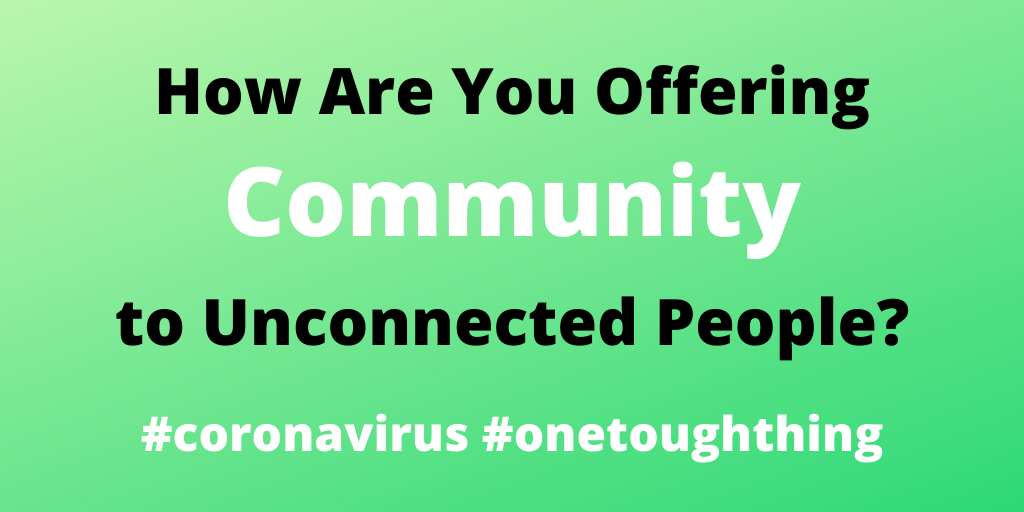How Are You Offering Community to Unconnected People?
 How are you offering community to unconnected people?
How are you offering community to unconnected people?
Note: All of us are aware of our percentage connected (i.e., average adult weekend worship attendance / adults connected in groups).
Let's say your average adult weekend worship attendance is 500 and you have 250 adults connected in groups. That means your percentage connected is 50%. That also means that 50% of your average weekend worship attendance is unconnected. See also, What's Your Urgency Level for Connecting Unconnected People?
Note: I always point out that if your Easter adult attendance is higher than average (and most of our Easter attendance is higher than average) then your percentage connected is lower.
Make sense?
As you know, I always point out that unconnected people are always one tough thing away from never being at your church again.
I usually describe "one tough thing" as loss of a job, difficult marriage, major health issue, or a troubled teenager.
One tough thing.
I'm going to add a new tough thing. #COVID-19
Now imagine you've suspended your weekend service until further notice and encouraged everyone to watch your online service.
Further, let's say you've encouraged everyone to watch the online service with their small group or a few friends.
Who do you think is most likely to watch alone or not watch at all?
I believe one tough thing just arrived for many of the unconnected people in our churches.
What can we do?
Make it easy to join an online group
One possibility that occurs to me is to make it easy to join an online group.
Here's a strategy to make it easy to join an online group:
Note: This is not a problem-free strategy. To pull this off will require courage, a sense of adventure, and the gift of hospitality. The goal is not a seamless learning experience. The goal is extending community to unconnected people.
This is not a problem-free strategy. To pull this off will require courage, a sense of adventure, and the gift of hospitality. The goal is not a seamless learning experience. The goal is extending community to unconnected people. Click To Tweet
1. Create a Facebook Group. Make the group private (that way people will need to request to join) and visible (that way unconnected people can find it).
2. Post the availability of online groups and provide a link to the Facebook group you've created. It might be a good idea to limit the number who can join. Close the group when the number is reached and then repeat the process with a new online group.
3. Create a short, 90 second, welcome video to pin to the top of the Facebook group. The video should welcome people to the group AND give a few details (when the group will begin, when it will meet, what the group will study/do, etc.)
4. Be sure the admins of the group are ready to accept requests to join.
5. While waiting for the group to begin meeting (start date is 2 or 3 weeks away?) encourage members to interact.
6. When the group begins meeting, post a link to the study video (A RightNow Media study or one offered on Anthology) with the instructions to watch the video BEFORE the meeting).
7. Provide a link to the scheduled Zoom (Skype, Google Hangouts, Got-To-Meeting, or other platform) meeting.
For more information and ideas about online groups see Can Your Small Groups Meet Online? and What to Do When You Can't Meet in Your Auditorium

